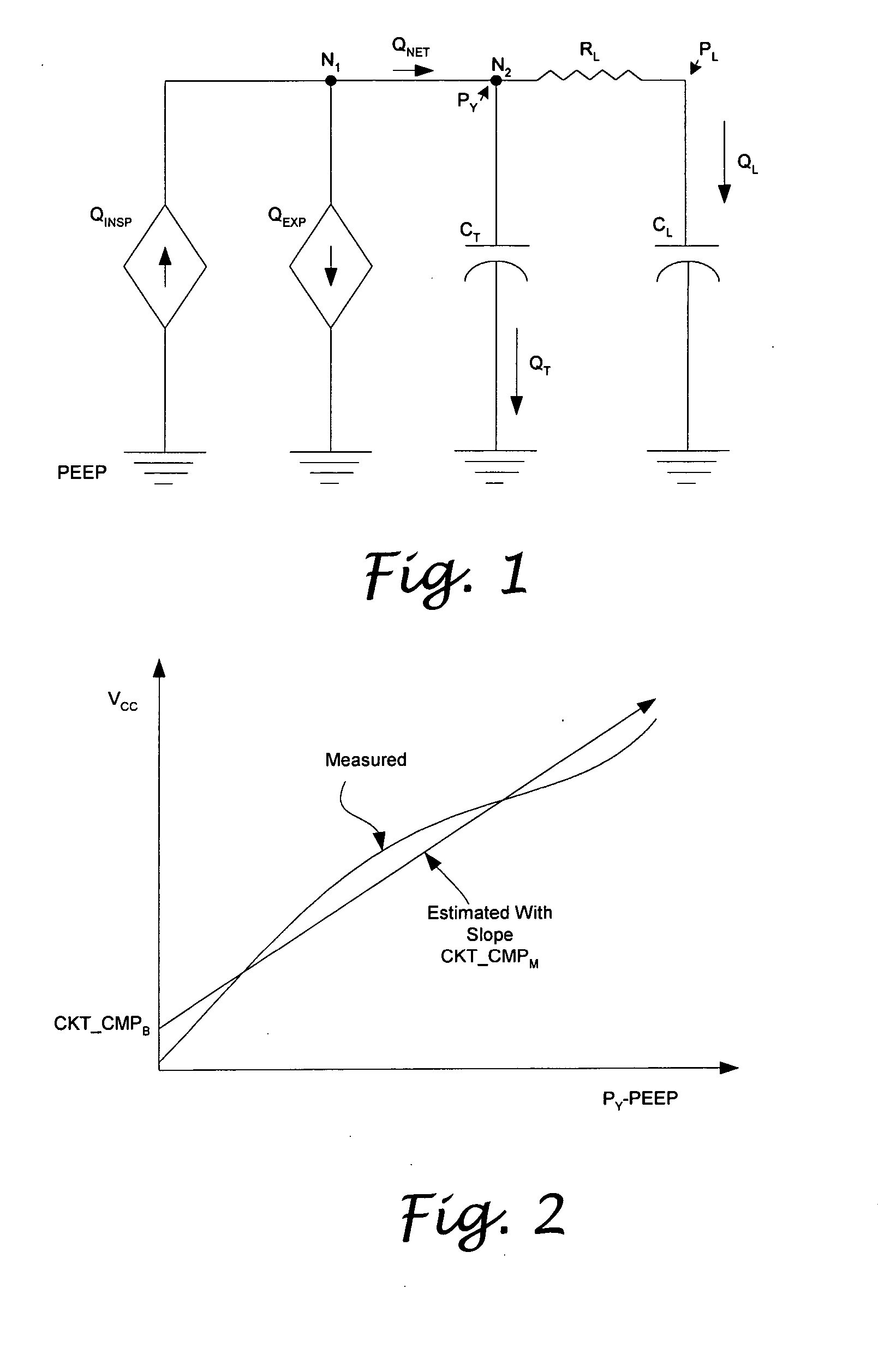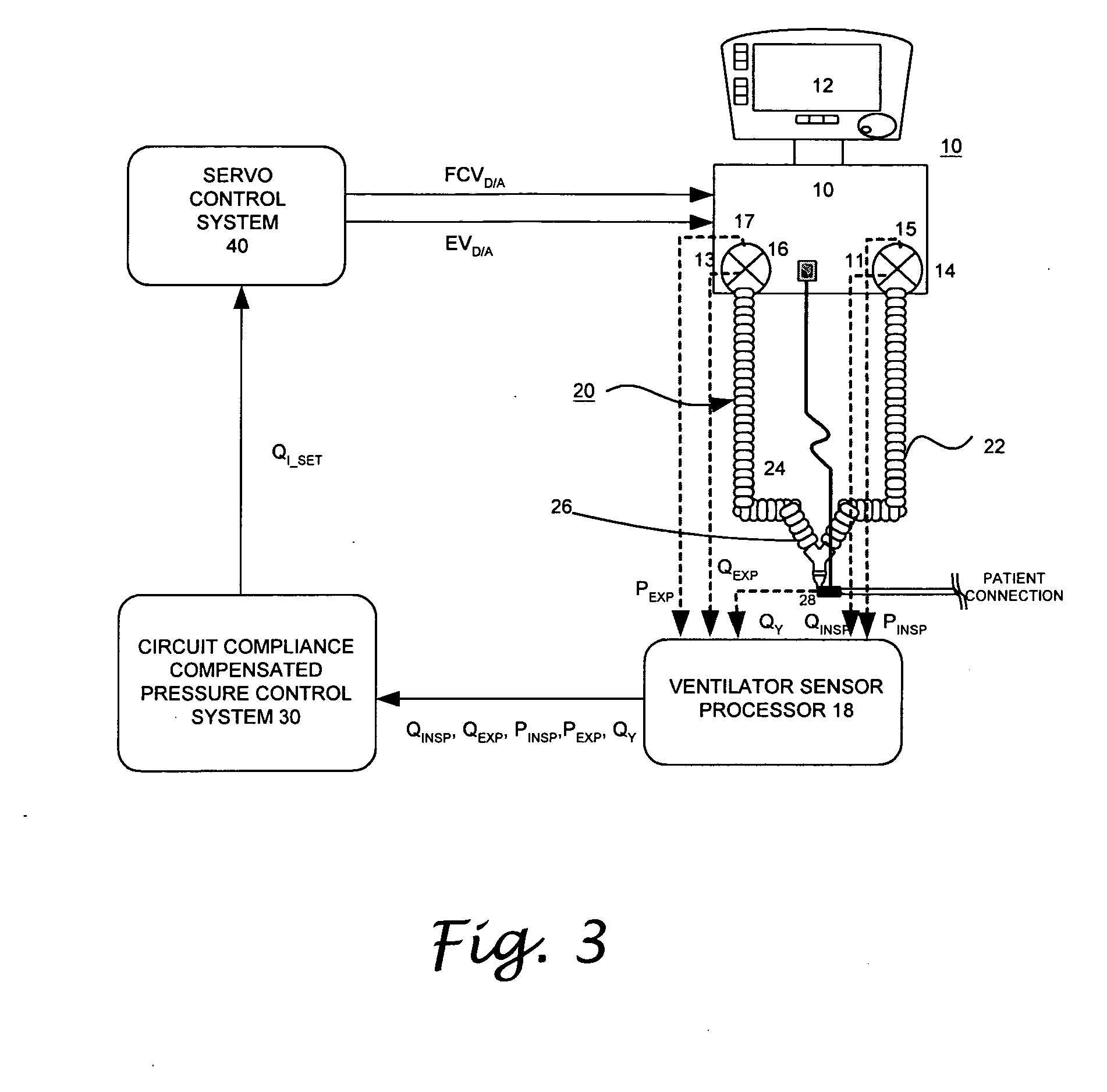System and method for circuit compliance compensated volume control in a patient respiratory ventilator
a technology of respiratory ventilator and circuit, which is applied in the direction of volume flow measurement device, fluid pressure control, special dispensing means, etc., can solve the problems of ventilators available in the market that do not allow circuit compliance compensation designs, inconvenient use, and inability to deliver accurate inspiratory flow, so as to prevent gas trapping and auto peeping, the effect of accurate inspiratory flow
- Summary
- Abstract
- Description
- Claims
- Application Information
AI Technical Summary
Benefits of technology
Problems solved by technology
Method used
Image
Examples
Embodiment Construction
[0018] In an electric circuit, the electric current I flows from a high potential level to a low potential level. When the electric current I flows through a passive circuit element such as a resistor, an inductor, a capacitor or a load, a voltage drop ΔV is created across such element. When two or more of the passive circuit elements of the electric circuit are connected to each other in parallel, the total electric current is split into two smaller currents distributed flowing through the respective elements. The magnitudes of the currents depend on the characteristic values, such as the resistance, the conductance, and the capacitance of the elements. In a patient respiratory circuit, the gas flow Q circulates from a high pressure level to a low pressure level in a way similar to the electric current I, and the gas flow Q through a circuit element such as an airway resistance causes a pressure drop ΔP similar to the voltage drop ΔV in the electric circuit. FIG. 1 illustrates a ci...
PUM
 Login to View More
Login to View More Abstract
Description
Claims
Application Information
 Login to View More
Login to View More - R&D
- Intellectual Property
- Life Sciences
- Materials
- Tech Scout
- Unparalleled Data Quality
- Higher Quality Content
- 60% Fewer Hallucinations
Browse by: Latest US Patents, China's latest patents, Technical Efficacy Thesaurus, Application Domain, Technology Topic, Popular Technical Reports.
© 2025 PatSnap. All rights reserved.Legal|Privacy policy|Modern Slavery Act Transparency Statement|Sitemap|About US| Contact US: help@patsnap.com



